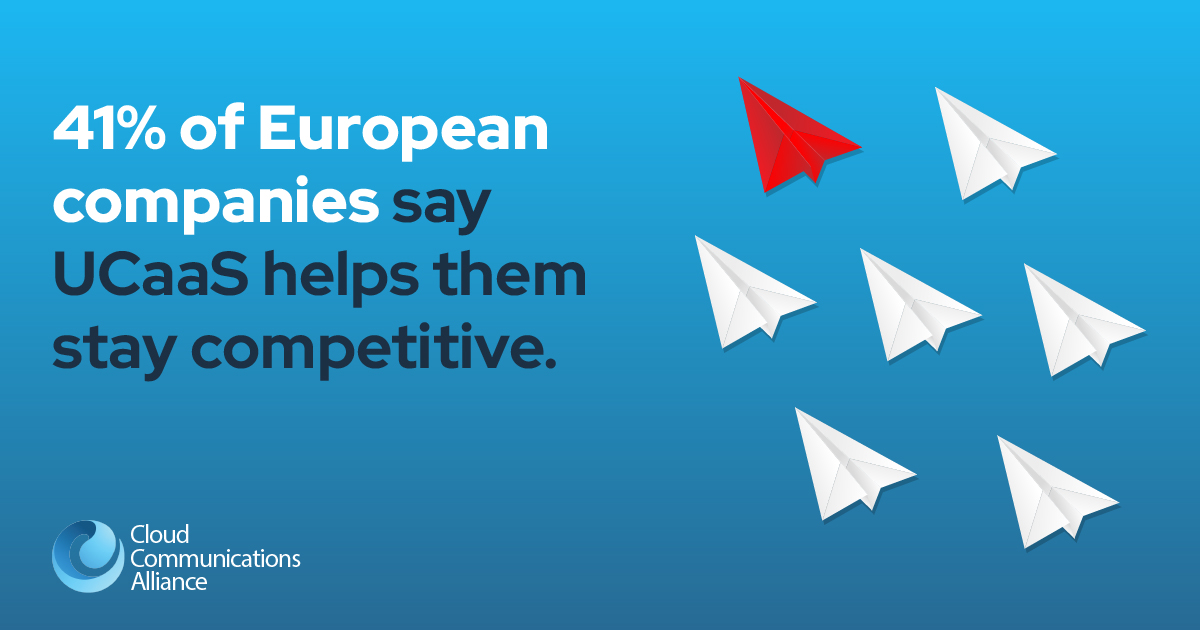The Transformation Of Cloud Communications In Recent Years

Estimates suggested that global digital transformation investments will exceed $6 trillion at the turn of the decade. Communications would account for 36% of the IT budgets with a global cost of $3,878 billion. What exactly is driving this change?
Why Cloud Communications Are Leading The IT Revolution
Cloud communications have enabled many employees and companies to adopt policies such as BYOD (bring your own device) and remote work, among others. In turn, this behavior has led to trends such as modularization of the communications stack.
As a response, service providers are evolving by incorporating new tech. Driving the growth projectile in digital transformation is cloud communication, reducing costs, and improving operational efficiencies for companies worldwide. How big of an impact does it have?
BT Openreach announced in 2015 that businesses in the UK wouldn’t be able to purchase ISDN lines from 2020 on, which shows the speed of innovations in cloud communication. Business communication is quickly moving to the cloud. Innovations in cloud communications are on every business owner’s tech watchlist.
A Look At The Recent History Of Cloud Communications
To get a clear idea of what to expect from the industry, let us look at the recent history of cloud communications and the trends and technologies evolving in this space.
1. Collaboration Software: Driving Unified Communications (UCaaS)
Collaboration, the protagonist of business communication, is a major driver of UCaaS solutions.
Key Innovations In Collaboration
Cisco and BabbleLabs — Companies are striving for basic but major innovations such as noise reduction in meetings. Cisco acquired BabbleLabs that developed a solution for suppressing noise through creative muting, and promptly applied it to their software and hardware endpoints. It is one of three acquisitions by Cisco Collaboration in 2020.
Salesforce and Slack — Salesforce, in a surprising move, acquired Slack. After a series of smaller acquisitions, Salesforce dove into collaboration, providing a more robust competitive alternative to Microsoft Teams and dynamics.
2. The Rise Of AI In Communications
Artificial intelligence (AI) has come a long way since experimental chatbots. Communication tech uses AI for different functions such as emotion recognition, speaker identification, and accent detection.
AI-Driven Developments
RingCentral and DeepAffects — DeepAffects is a conversational AI provider targeting video meetings and contact center solutions. RingCentral’s product RingCentral video, launched last year, already uses advanced features that will see major upgrades through integration. More interestingly, DeepAffects’ integration with RingCentral’s entire portfolio will be a strong move.
3. 5G: Launching Mainstream Connectivity
The 5G tech drove two significant acquisitions as comm giants position themselves for the next few years.
Strategic Acquisitions For 5G Preparedness
Verizon and BlueJeans — Verizon, having acquired OneTalk for voice and now BlueJeans for meetings and events, owns two major providers. It recently launched a new contact center as a service (CCaaS) as well. Looking at this portfolio with wired and wireless services, Verizon is set to be a one-stop communications provider. At the heart of the acquisition, as hinted by the CEO, is 5G.
Microsoft and Metaswitch — Microsoft acquired Metaswitch, a firm offering development and deployment of telecommunications solutions for service providers and large enterprises. Following an earlier acquisition of Affirmed Networks, Microsoft holds a strong position in software-controlled, cloud-delivered, 5G back-end services. 5G preparedness is supposedly the primary motivator behind the acquisition.
4. Working Through The Pandemic
Much of the growth in recent history is informed by the global pandemic, which influenced innovation and business direction in the past years.
Adapting To Pandemic Challenges
Zoom and Keybase — A clear example, Zoom acquired its way through security and encryption in response to widespread security concerns as the platform grew in popularity during lockdowns across many countries globally. The acquisition took less than a few weeks, and Zoom published its architecture for encryption within weeks of the acquisition.
5. SD-WAN: The Backbone Of Modern Infrastructure
Five years after the big BT Openreach announcement, SD-WAN is everywhere – with most companies using it in some form. It is an easy upgrade from legacy systems and facilitates commoditized infrastructure, which is cheaper, more accessible, and more advantageous to implement than on-premise, cloud, and hybrid environments.
Why SD-WAN Matters
SD-WAN facilitates commoditized infrastructure, which is cheaper, more accessible, and advantageous for on-premise, cloud, and hybrid environments. Through continuous innovations and acquisitions, companies are building robust infrastructures to support competent cloud communication solutions.
Challenges & Controversies In Cloud Communications
The journey of cloud communications has been marked by numerous challenges, both during its early adoption and in more recent years. While many of the initial hurdles have been addressed through technological advancements, new concerns have emerged, reflecting the evolving landscape of this dynamic industry.
Challenges Faced During The Early Years
Reliability & Connectivity Issues
In the early stages of cloud communications, internet quality was a significant barrier. Many regions struggled with inconsistent connectivity, leading to problems like dropped calls and poor audio quality. These issues made businesses hesitant to rely on cloud solutions for mission-critical operations.
Security Concerns
Security was a major concern as businesses moved from on-premises systems to cloud-based platforms. Fear of data breaches, unauthorized access, and the lack of standardized security protocols deterred early adopters.
Market Education
Convincing businesses to transition from traditional systems to cloud communications required substantial education. Providers needed to demonstrate the benefits of cost savings, scalability, and enhanced functionality, which often took time to resonate with potential users.
Recent Challenges & Controversies
Data Privacy & Compliance
With the rise of data protection regulations like GDPR, HIPAA, and CCPA, ensuring compliance has become a critical issue for cloud communication providers. High-profile breaches have further emphasized the importance of secure data handling, adding pressure on providers to maintain transparency and adopt rigorous security measures.
Network Dependency & Reliability
Despite advancements in internet infrastructure, network outages and disruptions remain a significant risk. The heavy reliance on stable connectivity means that any downtime can lead to operational delays, financial losses, and damaged reputations, particularly for industries where uptime is non-negotiable.
Future Outlook: Modularization & Emerging Technologies
Through acquisitions and innovations, companies are building their infrastructures to provide competent cloud communication solutions. Further developments through modularization of the communications stack, integration of AI, and the internet of things will usher in a new era of comms.
Gain more such industry insights, and network with forward-thinking cloud leaders with the Cloud Communication Alliance (CCA), a not-for-profit peer association dedicated to the growth of the cloud communications industry.
Contact us to learn about membership.


